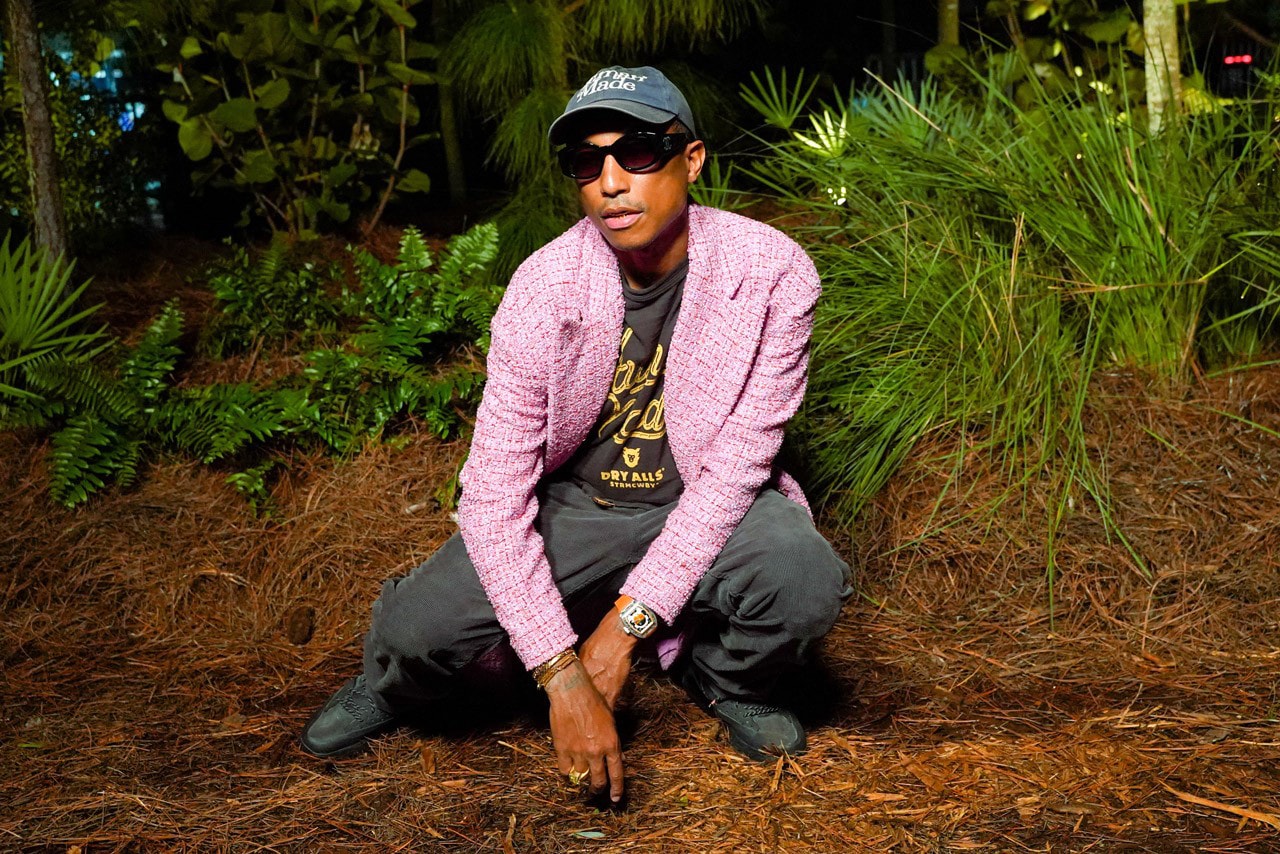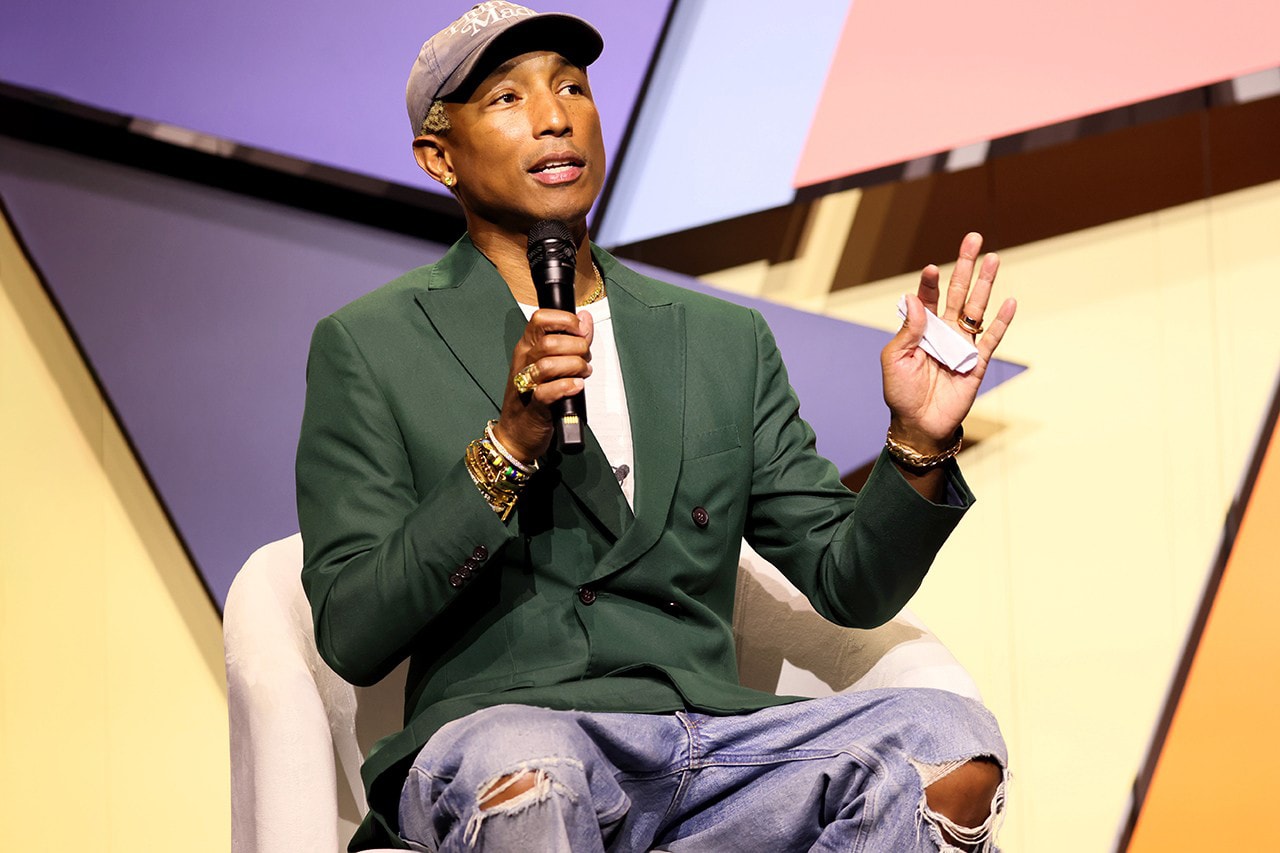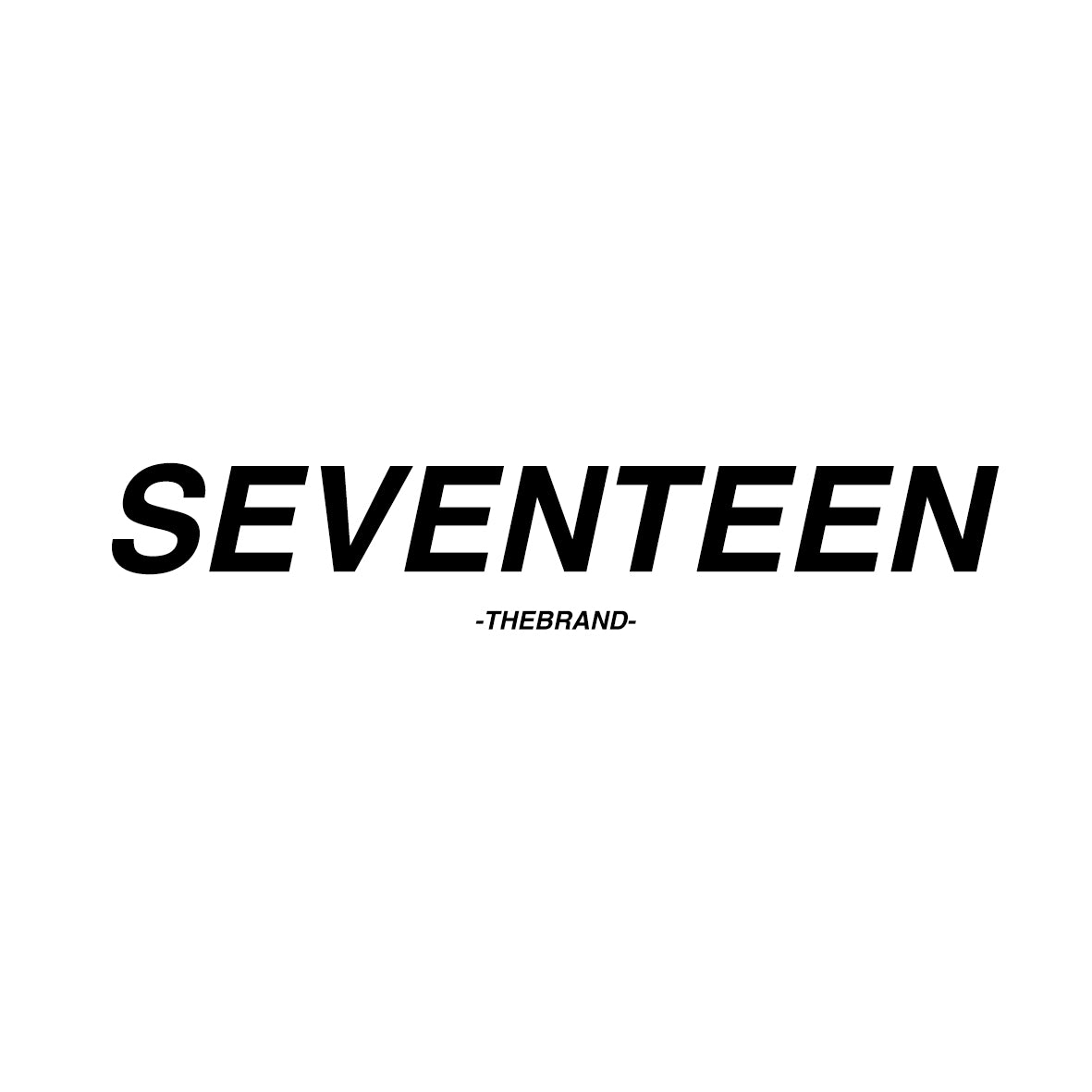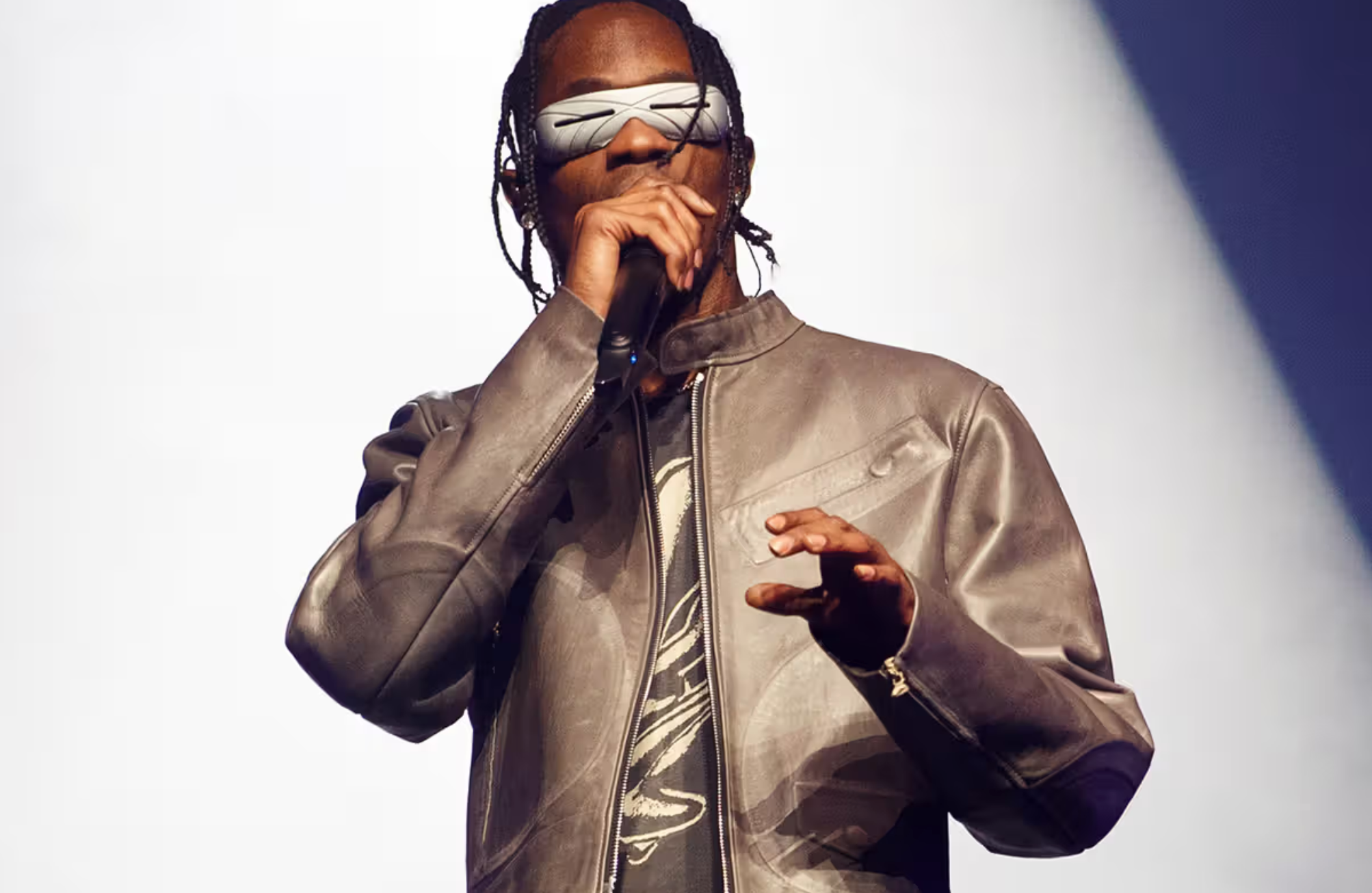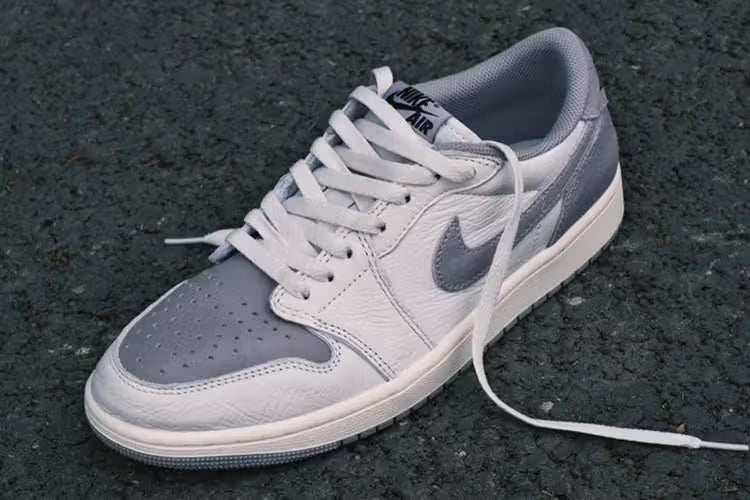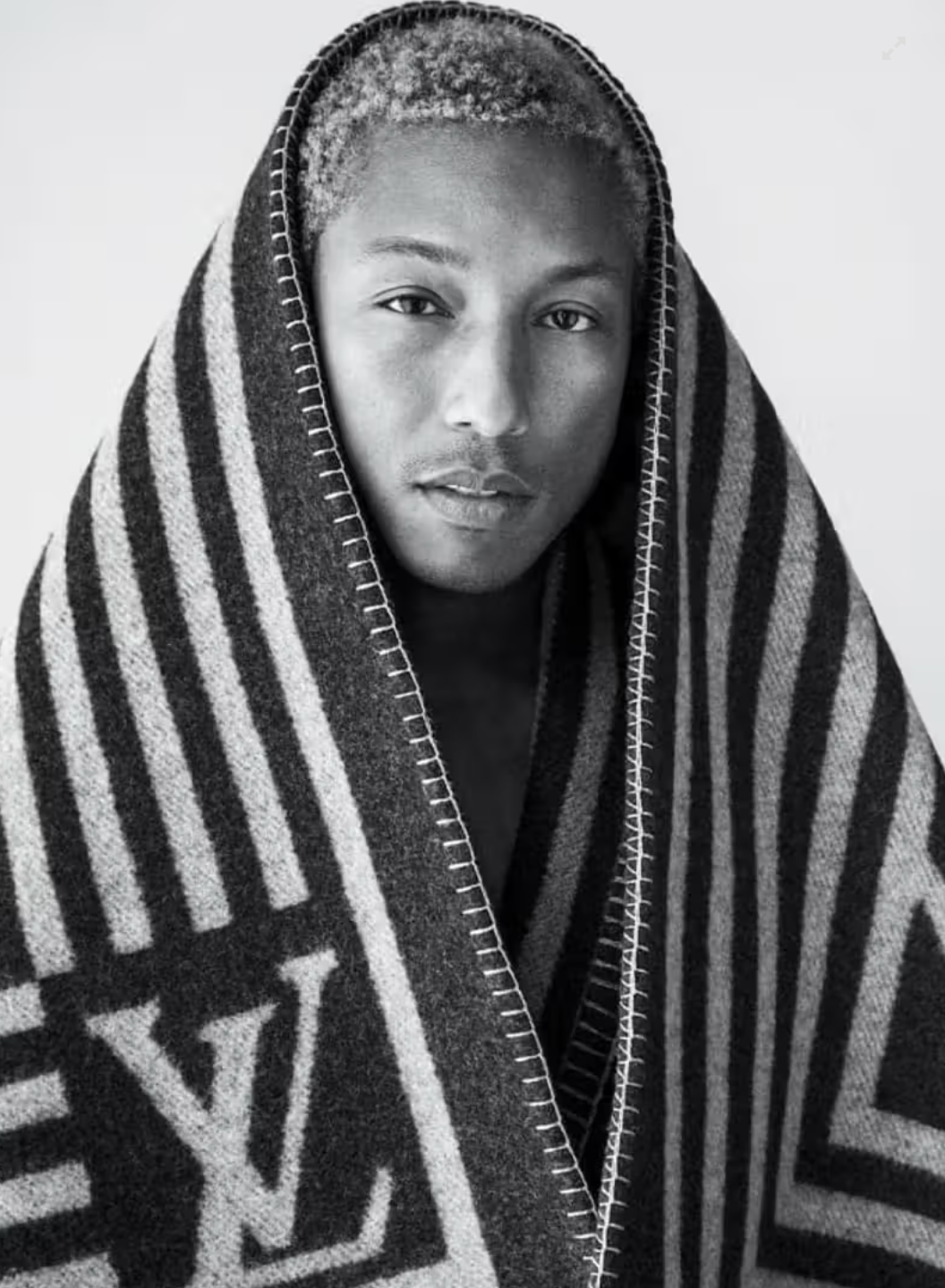
Pharrell's Appointment at Louis Vuitton Continues the Era of Multi-Hyphenate Creative Directors
The fashion world has finally received the answer to one of the biggest questions of this decade — who would succeed Virgil Abloh as the Menswear Creative Director at Louis Vuitton (PARIS:MC.PA -0.79%) ? Yesterday, February 14, the French luxury maison announced that Pharrell Williams would take the role, and the news was met with mixed reactions: some were excited the brand had chosen a “global icon” to lead the house, while others felt disappointed that it was yet another “non-designer” that has been hired.
Williams’ appointment comes after various names floated around last summer to succeed Abloh at the house — Grace Wales Bonner, Martine Rose and Telfar Clemens were reportedly front runners to take over the Louis Vuitton menswear division. In regards to the official creative director decision, the surprise announcement from the brand called Williams a “visionary whose creative universes expand from music to art, and to fashion.” It is evident that with this statement and mention of Williams’ ample talents, the house has had its eyes set on a multi-disciplinary creative to helm the brand for a while.
Abloh’s tenure at Louis Vuitton set a precedent for the brand and its consumers. His ideas were for the masses, redefining what luxury truly means in this day and age. His appointment kicked off a new direction for LV, proving that a creative director does not require traditional design training to be successful. An architect and engineer by trade and the headlining DJ at some of the industry’s biggest gatherings, the entrepreneur slash creative director slash composer was considered to be the pinnacle tastemaker of the decade.
With Williams’ new role, he follows the path that Abloh paved the way for — the era of multi-hyphenate creative directors at Louis Vuitton (and perhaps beyond). Diet Prada calls Williams the “tastemaker of his generation,” echoing what many fans equate with his successes. His return to Louis Vuitton comes after many design ventures, including the co-launching of Billionaire Boys Club and BBC ICECREAM with Nigo at the beginning of the century. Williams also collaborated with adidas, Uniqlo, G-STAR, Moncler and Tiffany & Co., touching on product creations for every price point. He’s even worked with Louis Vuitton in the past, collaborating with the brand in 2004 and again in 2008.
His new position as the Menswear Creative Director of Louis Vuitton underlines the current luxury trend of executing future visions through the hands of multi-hyphenate “non-designer” celebrities. Traditional luxury brands like Louis Vuitton are inherently conveying the message that it is not enough to just be a designer. In order to embed the brand further into culture, Louis Vuitton is investing in individuals that have a cross-cultural understanding of how multiple genres can feed into one. Long-gone is the traditional definition of a creative director, where they oversee the brand’s ultimate vision and aesthetic in a bird’s eye view. To keep up with the industry’s evolution, creative directors must also be able to take on the role as cultural curators and tastemakers.
Those who are skeptical of Williams’ appointment do not seem to believe that he would be able to design anything new per se and would rather have a younger, up-and-coming designer share their visions for the brand. To that thought, it might be precisely why Williams is fit for the job. With his breadth of experiences across genres — including music, art, design and fashion — his knowledge of how consumers absorb and engage with information, products and stories brings a fresh perspective to a traditional brand. Marketing 101 would tell you that understanding consumer behavior is one of the most important aspects of driving success. With Williams’ reach and influential persona, it might just be exactly what LV needs to keep its numbers up in a post-Abloh era.
Crossovers are inevitable in a world where entertainment, music and art intertwines seamlessly with the fashion industry. Presently, consumers are seeing a shift in the industry as fashion continues to embrace celebrities or others that are not designers by profession to take on lead creative roles — like Rihanna and her Fenty luxury partnership with LVMH. At the most recent Louis Vuitton menswear shows where performances by Kendrick Lamar and Rosalía became main events alongside the clothing shown on the runway, the French label showed that emphasis on the story behind how a collection is presented is just as important as the pieces themselves.
As Louis Vuitton continues to believe in the importance of blending categories and placing modern consumers at top of mind, all while cementing itself as a “cultural” luxury brand for the people, tastemakers like Williams will continue to occupy the seat at the top when it comes to creative direction.

